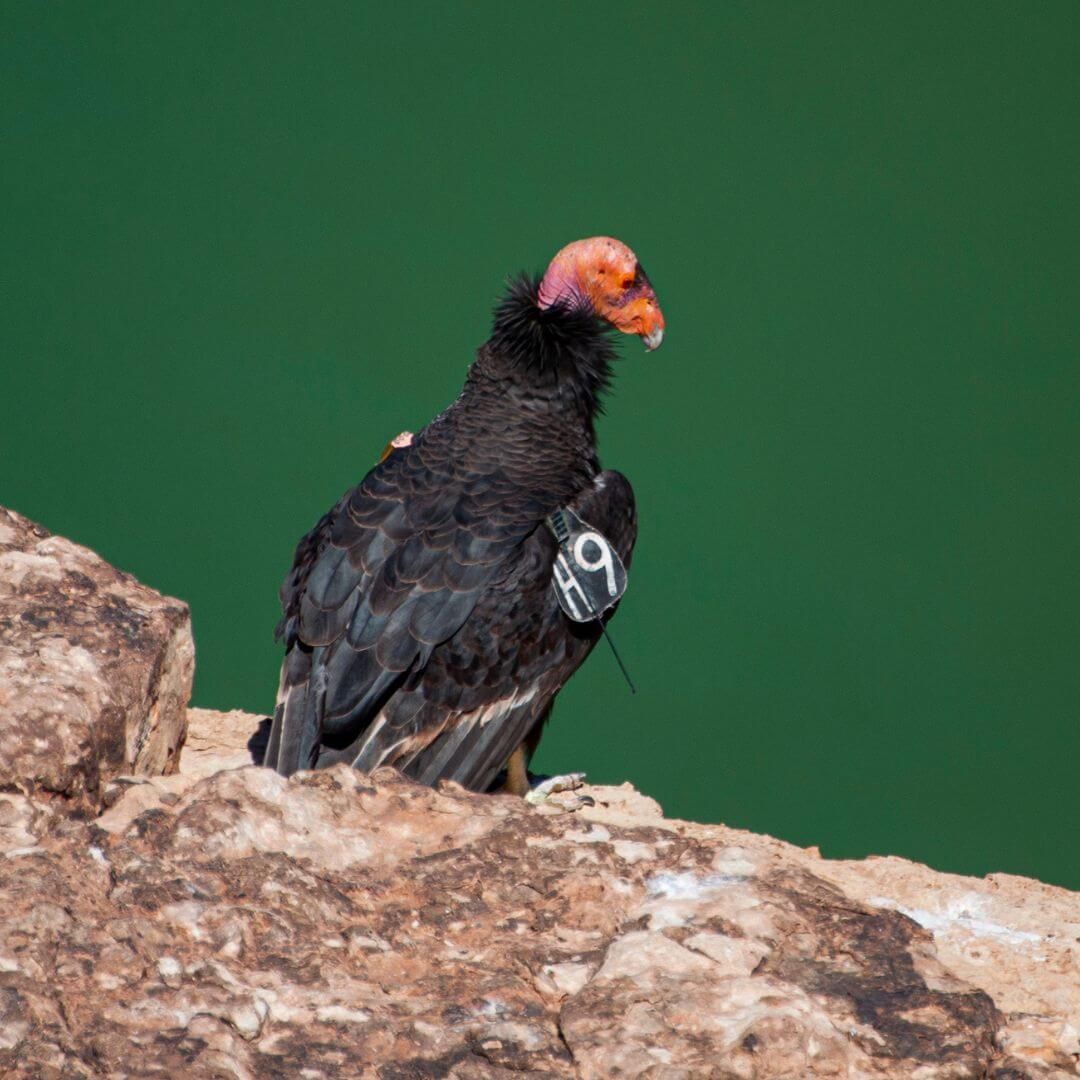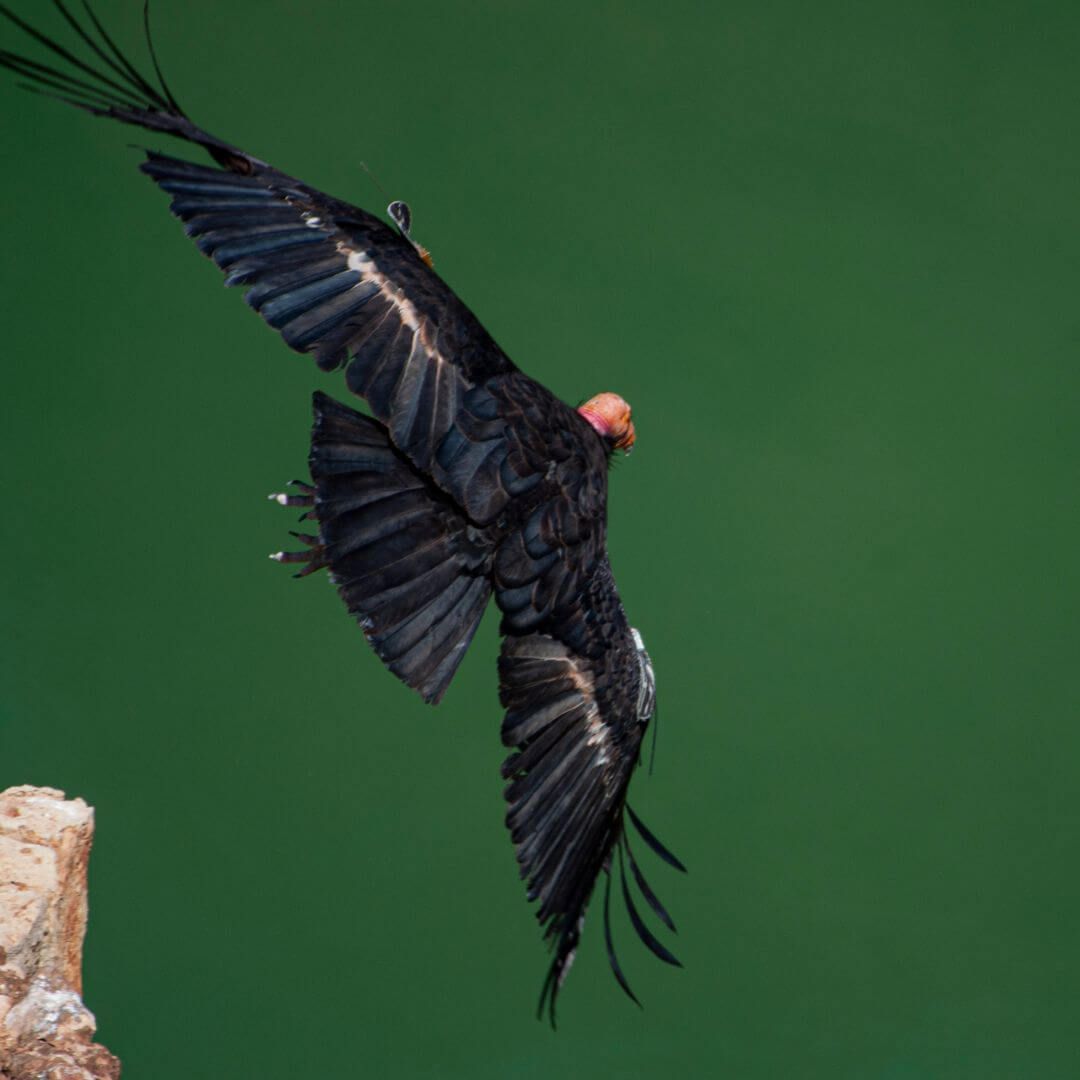California Condor

Let's Learn About California Condors
Word of the Week
Captivity
Animals in captivity are kept and cared for by people.
Animals that live in zoos, aquariums, breeding centers, and even your home are all in captivity.
Fast Facts

Where do California condors live?
California condors are found in small parts of western North America.
California condors once ranged across most of North America, but today, they're only found in the small areas where there were reintroduced. Populations can be found in California, Arizona, and Mexico.
What do California condors eat?
California condors are scavengers, meaning they eat dead meat.
Condors are types of vultures. Like most vultures, California condors look for animals that died or meat leftover from other predators.


What traits do condors share?
Only two species of condors exist, the California condor and the Andean condor. They have many traits in common, such as...
- A diet of dead meat.
- A bald head.
- A huge wingspan.e
- Impressive soaring abilities.
How many California condors are there?
There are less than 400 California condors in the wild today.
Wild California condors are monitored very closely by scientists. Each adult California condor in the wild wears a wing tag so scientists can keep track of who is who.

Species Spotlight
Condors
The California condor has the largest wingspan of any bird in North America. It measures more than 9 feet across! However, its cousin, the Andean condor, has it beat. The Andean condor can be found soaring along the eastern coast of South America. Its wingspan measures more than 10 feet across! The Andean condor is the largest bird of prey in the world.
Condors are New World vultures, meaning they live in North and South America. Like most vultures, they are scavengers. They have many adaptations to help them eat dead, rotting meat that most other carnivores cannot eat without getting sick.
Scientists used to think their bald heads helped them stay clean while eating this decaying meat. The bald head prevents rotting meat and bacteria from getting stuck in their head feathers. Today, scientists hypothesize their bald heads may be used more for thermoregulation (how they control their body temperature).
Imagine when you go outside in the winter. We wear hats to stop heat from escaping our bodies through our heads. It's like vultures never wear their hats! Their bald head allows heat to escape easily, helping to keep them cool.
Vultures sometimes get a bad reputation because of their odd features and love of dead meat, but vultures are very important in nature. Vultures, like other scavengers, work as the clean-up crew. Without them, the dead, decaying meat they eat would spread bacteria and make other animals sick.
Left: California condor; Right: Andean condor
BRAIN BLAST
The Species Survival Plan is a program used by zoos and aquariums in the United States to organize captive breeding programs for endangered species. Animals are moved between zoos and aquariums for breeding!
Take 10 minutes to research the Species Survival Plan. Make a list of 5 species that are being protected using captive breeding programs as part of the Species Survival Plan.
Conservation Corner
Captive Breeding Programs
Captive - An animal in captivity, like in a zoo
Breeding - When animals reproduce
Captive breeding programs are organized programs that allow animals to reproduce in captivity (like in a zoo) where they are safe. They make sure animals do not go extinct, even if none are left in the wild. Captive breeding programs help endangered animals like ferrets, frogs, wolves, and, of course, condors.
In the 1980s, the 22 remaining California condors were captured from the wild. They were brought to the San Diego Zoo and Los Angeles Zoo. There, they had a safe place to live and breed. Wild California condors usually only have one chick every other year because they put so much time and energy into raising them. At the zoos, they can breed every year, so they produce twice as many chicks as they would in the wild!
Some eggs are moved from their original parents to be raised by a different condor pair or zookeepers. The chicks raised by zookeepers are fed using a condor puppet to make sure the chicks don’t get too familiar with humans!
The California condor breeding program began with 22 condors. After 12 years of being extinct in the wild, the first California condors were released. Their population has grown steadily since then, making the California condor breeding program a perfect example of the power and importance of captive breeding programs.
California Condor Chaos
Determine which terms below describe California condors and which do not.
California Condor Challenge
Many zoos and aquariums in North America are certified by the Association of Zoos and Aquariums (AZA). Zoos and aquariums certified by the AZA are required to participate in programs to protect endangered species.
Select from the list of breeding programs below. Using the link provided, research the animal, why it is endangered, and details about the breeding program.
Answer the questions below about the captive breeding program you selected.
BONUS: Explore the list of AZA Zoos and Aquariums linked below to see if your local zoos and aquariums are AZA certified. Identify if they participate in any captive breeding programs.
Learn More!
^*This video is long but gives the most complete description of California condor history*
Glossary
Captive Breeding Program
A program that allows endangered animals to live and breed in captivity (like at a zoo) where they are protected from environmental threats.
Captivity
When animals are kept and cared for by people (like in a zoo).
Conservation
The act of preserving the environment.
Endangered
An organism that is threatened with extinction.
Extinct
When an organism has no living members remaining.
Habitat Loss
When habitats are destroyed or changed into human-managed land such as farms or cities.
New World
Describing an animal that lives in North America and/or South America.
Pollution
Toxins or other harmful substances that have entered the environment and are harming the natural world.
Reintroduction
Returning an organism to its natural environment.
Scavenger
An animal that primarily eats dead meat.
Species
A closely related group of animals with similar characteristics that are capable of reproducing (example: there is 1 species of gray wolf).
Vulture
Birds of prey known for their bald heads and ability to scavenge.
Sign Up for our Newsletter
Stay up to date with new adventures, live classes, deals, and more!

Helpful Resources
*Please note we do not offer refunds for EdZOOcating Adventures memberships. We recommend you explore the 3-day free trial prior to subscribing!*




